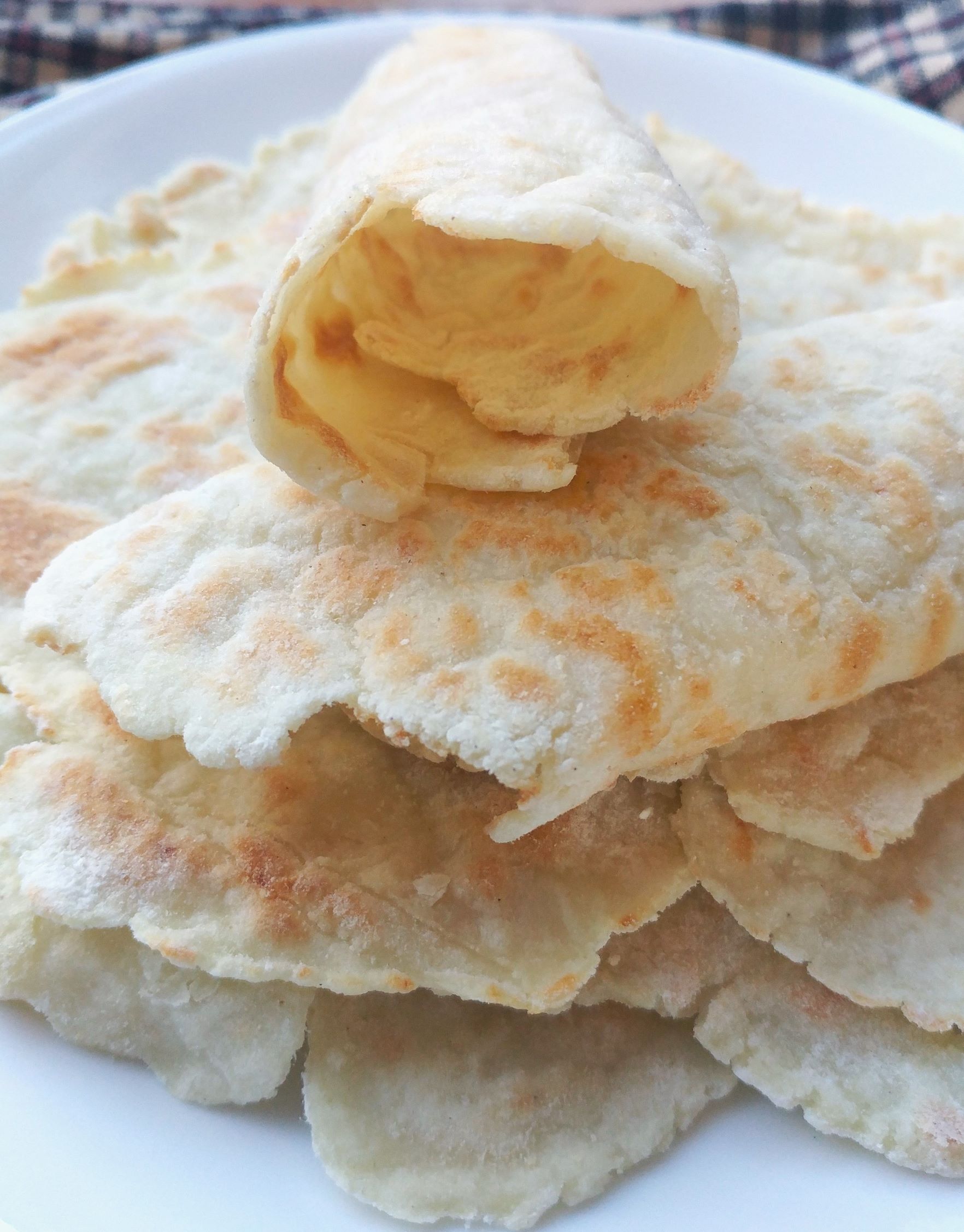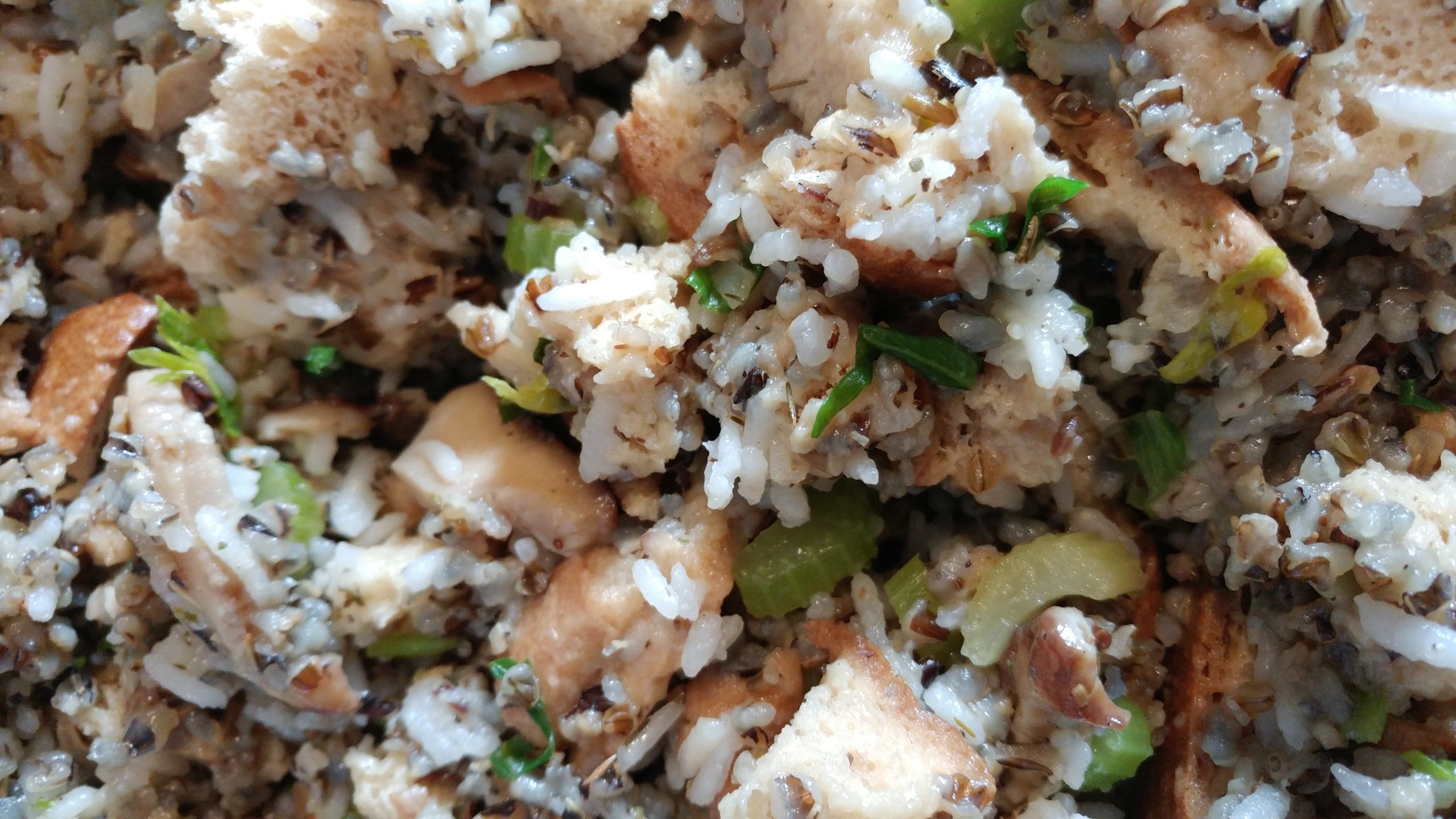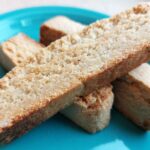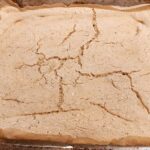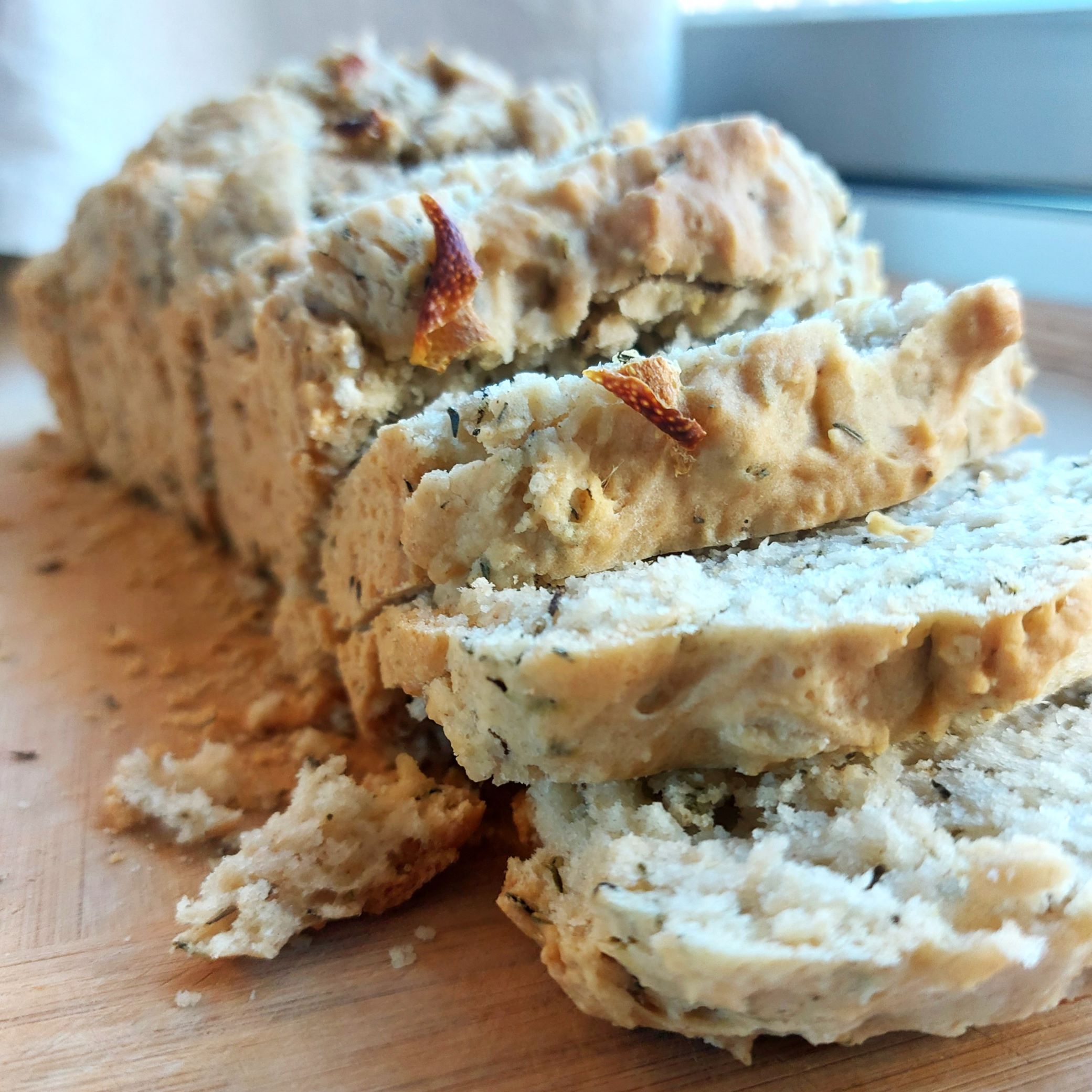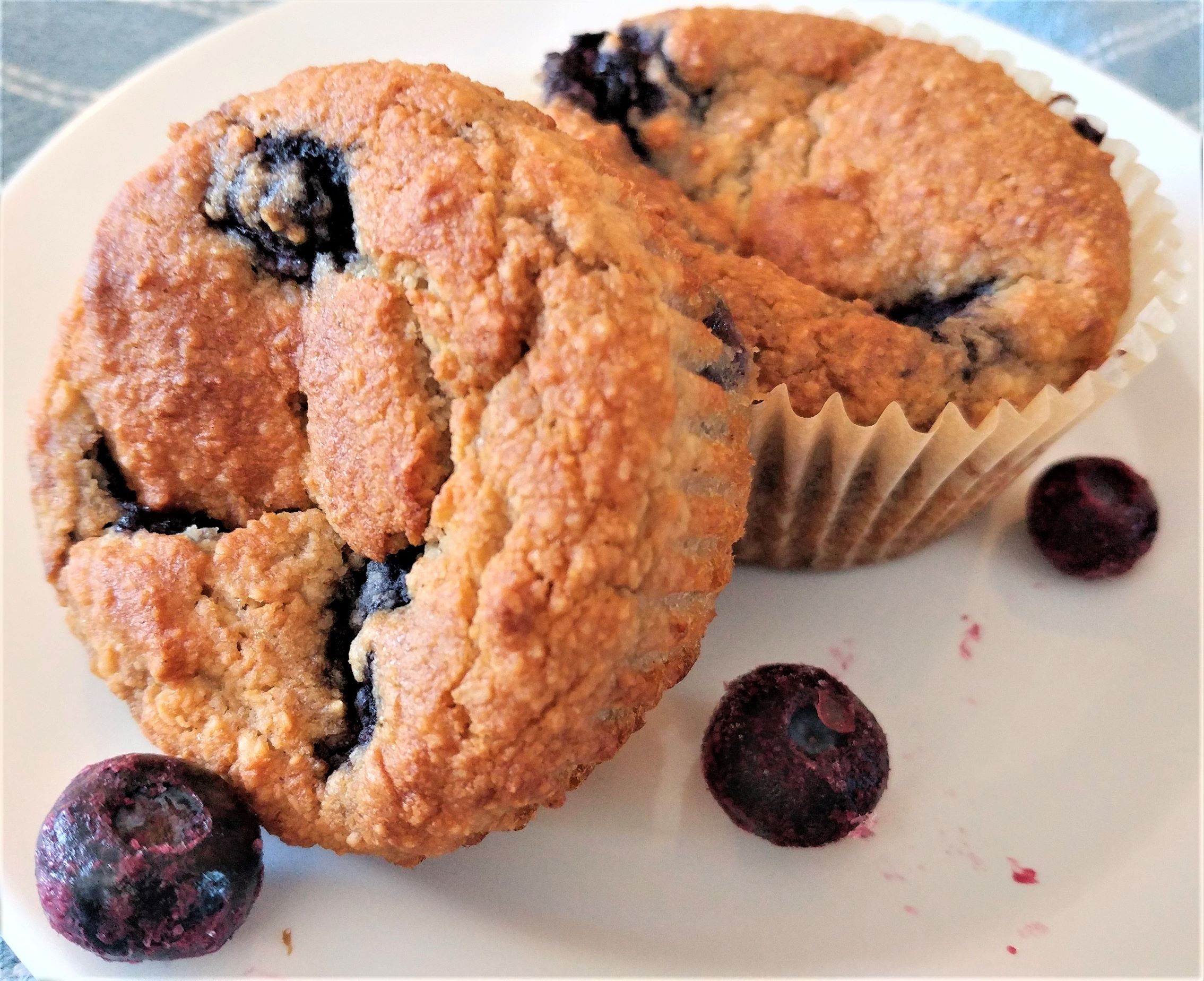Last Updated on September 17, 2024
This Vegan and Gluten Free Lefse, is a new take on a traditional soft Norwegian flatbread.
It was my grandmother’s family tradition to always have lefse ( and potato sausage ) every year for our family Christmas gatherings.
So we were always saving our left over mashed potatoes from the night before or from the Thanksgiving meal to make our traditional lefse.
But over the years, my family stopped making lefse, not sure exactly why?
So one day I was feeling a bit nostalgic, and decided to try making my own lefse.
Years ago I did attempt to make lefse and failed, so I gave up… But I was feeling up to the challenge again.
Of course, the lefse I grew up enjoying was not vegan or gluten free, I had to create a new version of lefse for the gluten intolerant and vegan family members.
You will notice that the recipe I created is just as simple as the traditional recipe.
I did not use a special lefse kit or griddle, I have used both a electric skillet or a large skillet on the stove top and they both gave me the same results.
But the lefse kits certainly would have made things a little easier but they are not necessary.
Some things I’ve learned from making lefse
What potatoes to use?
I experimented with different types of potatoes.
The first batch was with russet potatoes.
Russets are not the ideal potato for this, they are fluffy and do not hold together very well.
The second batch was red potatoes.
I loved the red potatoes, they have a gluey texture that helps to hold the lefse together better.
What size should I make my lefse?
My grandmother and great-grandmother would roll out the entire dough and cut it into pie sections.
In my experience I have found that making a smaller size lefse is much easier to handle.
How much can I make?
If you are going to take the time to make lefse, I suggest making a large batch.
I freeze my lefse for later, it is freezer friendly.
How to enjoy your homemade Vegan and Gluten Free Lefse
There are so many different ways to enjoy your fresh homemade lefse.
The tradition in our family was to spread butter on the lefse, sprinkle sugar and cinnamon on top, roll like a crepe, and enjoy.
But my favorite is as a breakfast burrito, with a chickpea scramble and vegetables.
Or spread with a fresh homemade hummus, YUM!

Ingredients needed for the lefse
- Potatoes – The potato of my choice is the red potato because of the gluey texture and the better flavor.
- Potato Water – This is a must! Do not throw the water from the potatoes down the drain, save that potato water to mash the potatoes, this will help with the gluey texture and it also thicken the mashed potatoes.
- Plant Based Milk – I used a unsweetened plain almond milk for this recipe. Any plant based milk will work.
- Vegan Margarine – Any vegan margarine will work for this recipe.
- Gluten Free Flour – The gluten free flour I used in this recipe was the King Arthur Measure for Measure Gluten Free Flour.
- Salt
How to make Vegan and Gluten Free Lefse
NOTE: If using left over potatoes, skip the cooking of the potatoes, add all the ingredients, (leaving out the flour) to the left over potatoes, puree until smooth and continue to The next day portion of the recipe.
Clean, peel, and dice your potatoes.
In a medium sized stock pot, add the potatoes and enough water to cover the potatoes.
Bring the water to boil at a medium high heat, once at a boil, reduce to a medium heat until they are soft but not mushy.
Remove from the heat, but before draining the potatoes, make sure to have a bowl under the strainer to collect the potato water.
Drain the potatoes, and place them back into the pot, continue by adding the margarine, salt, potato water, and plant based milk.
Mash up the potatoes with an immersion blender until they are smooth and lump free.
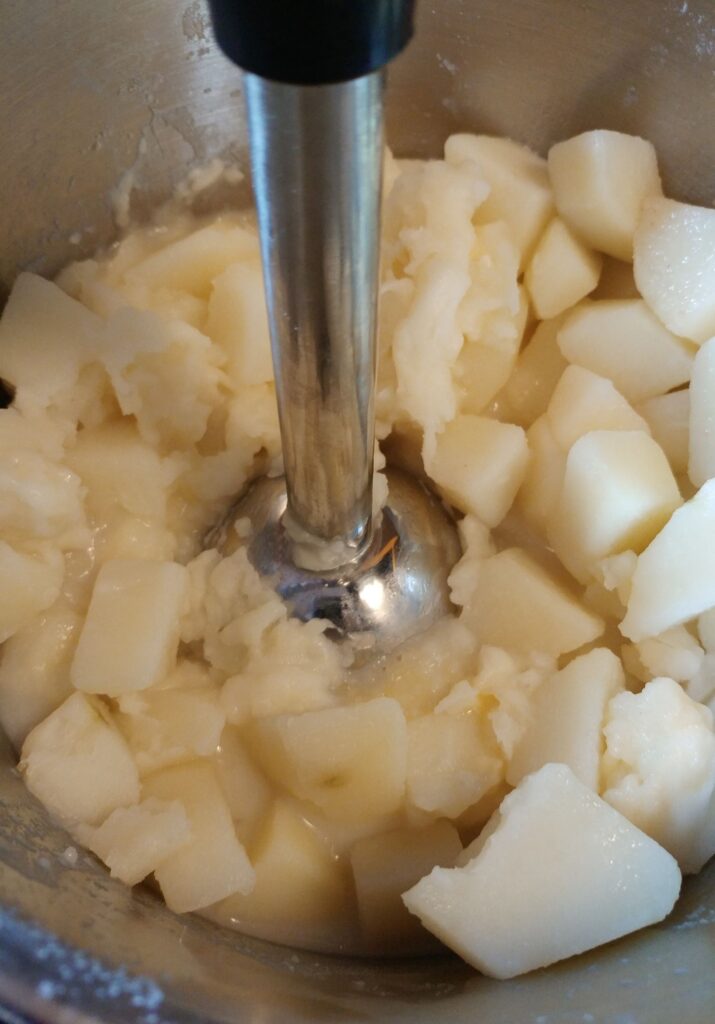
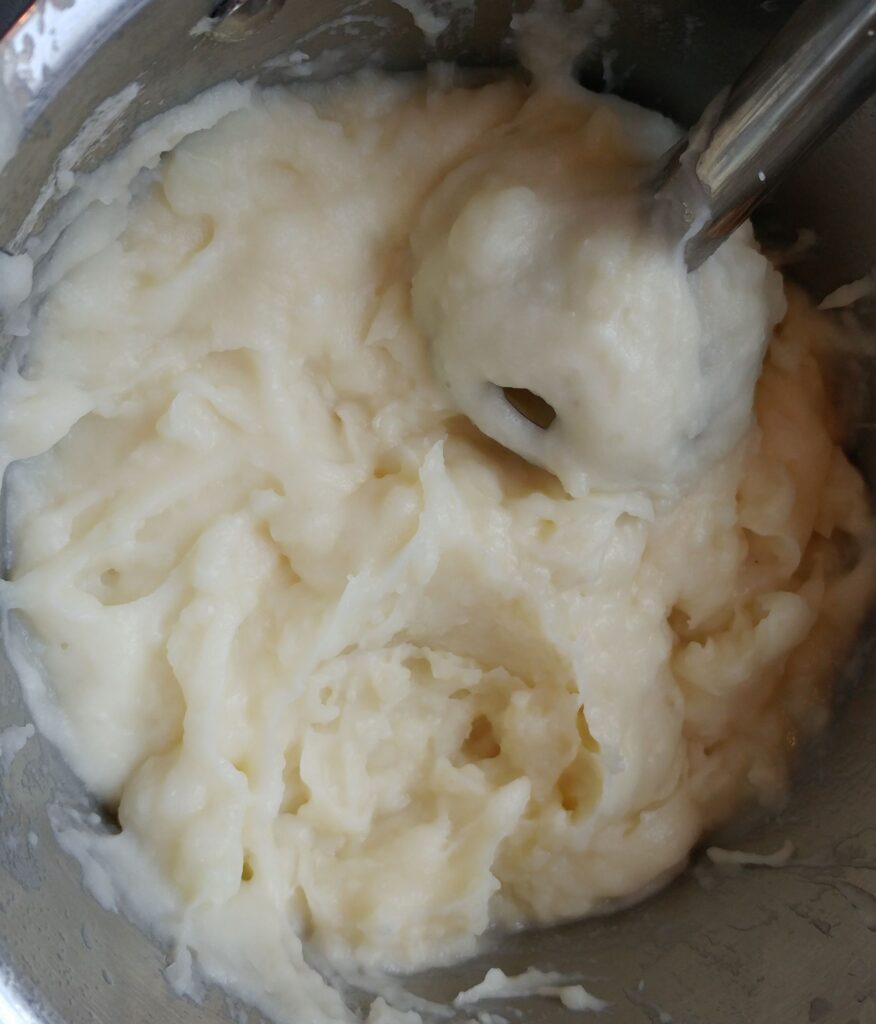
Place the mashed potatoes in a bowl and put into the refrigerator over night.
The next day
Remove the bowl from the refrigerator.
Add the flour to the potatoes and blend well, adding a little at a time to make sure the flour is well incorporated.
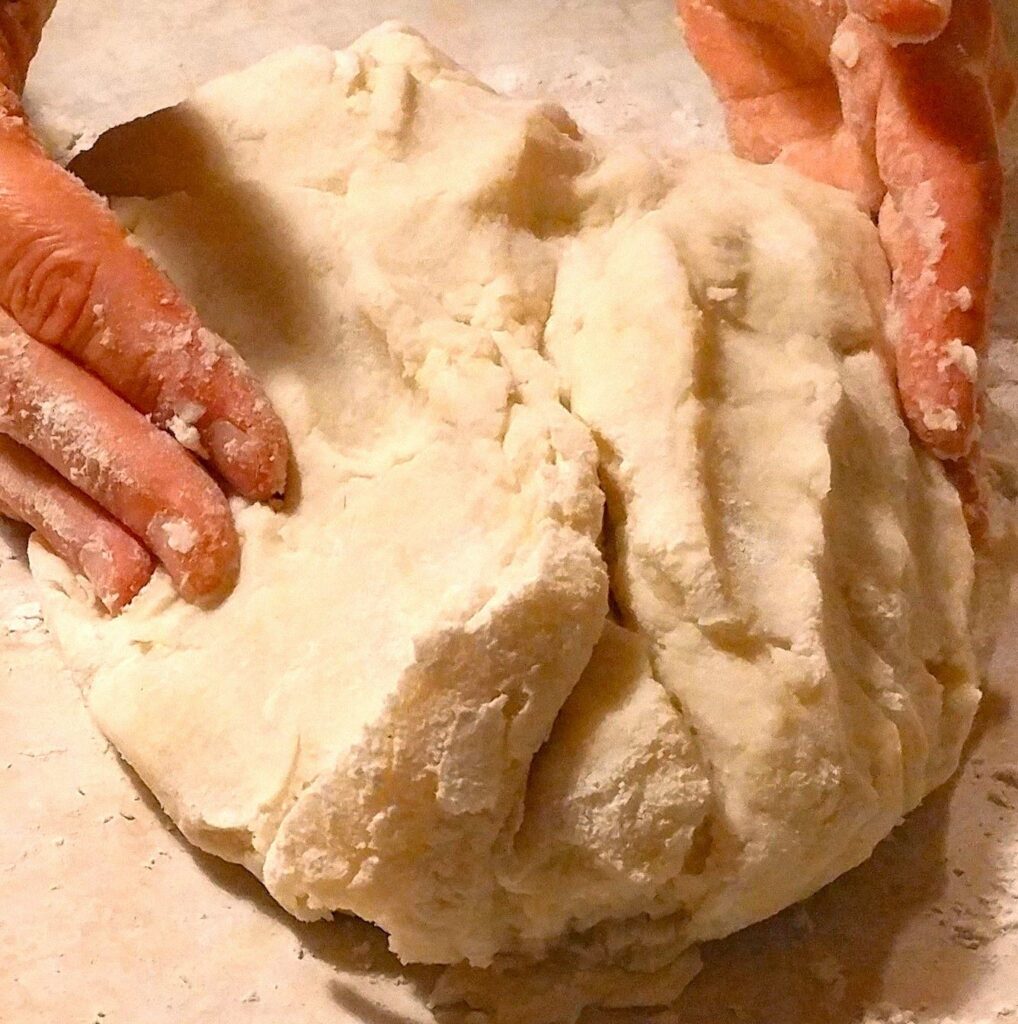
Sprinkle a little flour onto the counter and onto your rolling pin.
Scrape the potato mixture onto the floured countertop and form a long log.
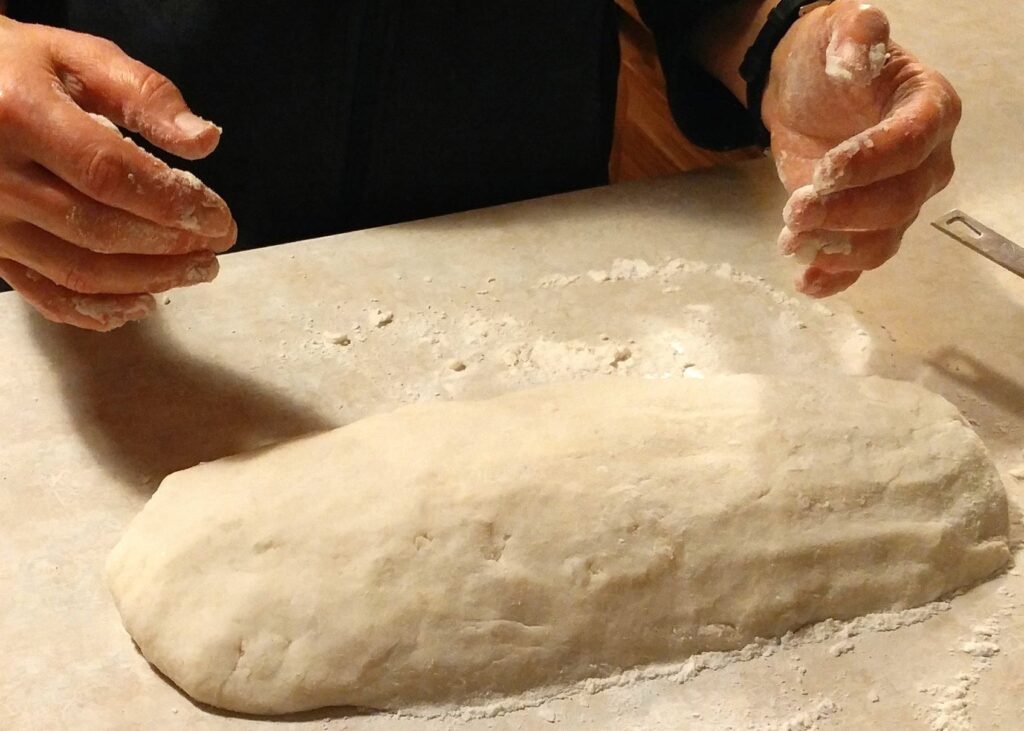
Cut the log into sections, the sections should be about the size of a golf ball.
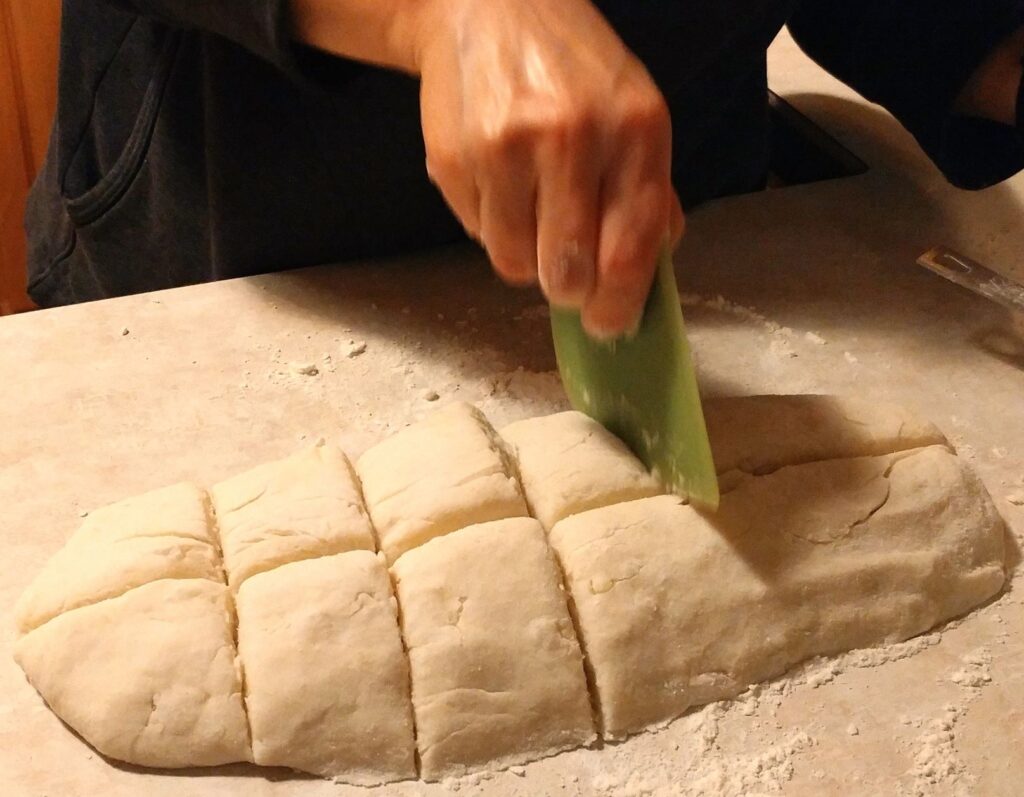
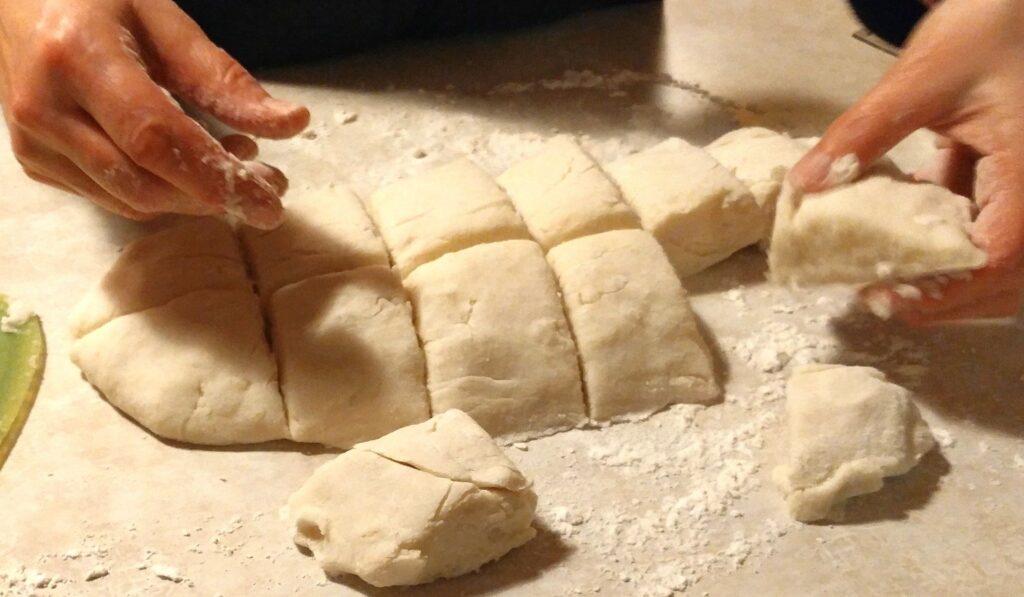
To keep the dough from falling apart, place the sections on a plate and return to the refrigerator until ready to roll out.
Remove one of the sections from the plate, place onto the floured counter and roll out as thin as possible, using as little extra flour as possible.
In this recipe I used a electric skillet and set the temperature to 325° F.
If using a skillet on the stove top, heat the skillet up to a medium heat before adding the rolled out lefse, and adjust the heat as you cook the lefse.
Once the skillet is to temperature, place the rolled out lefse on the skillet.
Cook for a few minutes, flip, cook for a few more minutes on the opposite side.
You will start to notice that the lefse starts to form brown spots, this means it is time to flip.
Also the lefse can puff up in spots, this is normal.
Once the lefse is done, remove from the skillet and place onto a flour sack towel to cool.
Continue making the lefse until you have used all the dough.
How to store your finished lefse
After everything has cooled, store in a air tight container in the refrigerator or freezer.
Different ways to enjoy your lefse
Spread butter/vegan margarine, sprinkle cinnamon and sugar over the butter, roll to eat.
Or spread butter, jam or cranberry sauce over the lefse and roll to eat.
A great alternative for a wrap or a soft taco, add burrito/taco filling, or scrambled egg, tofu, chickpea, hummus or a spread of your choice and enjoy!
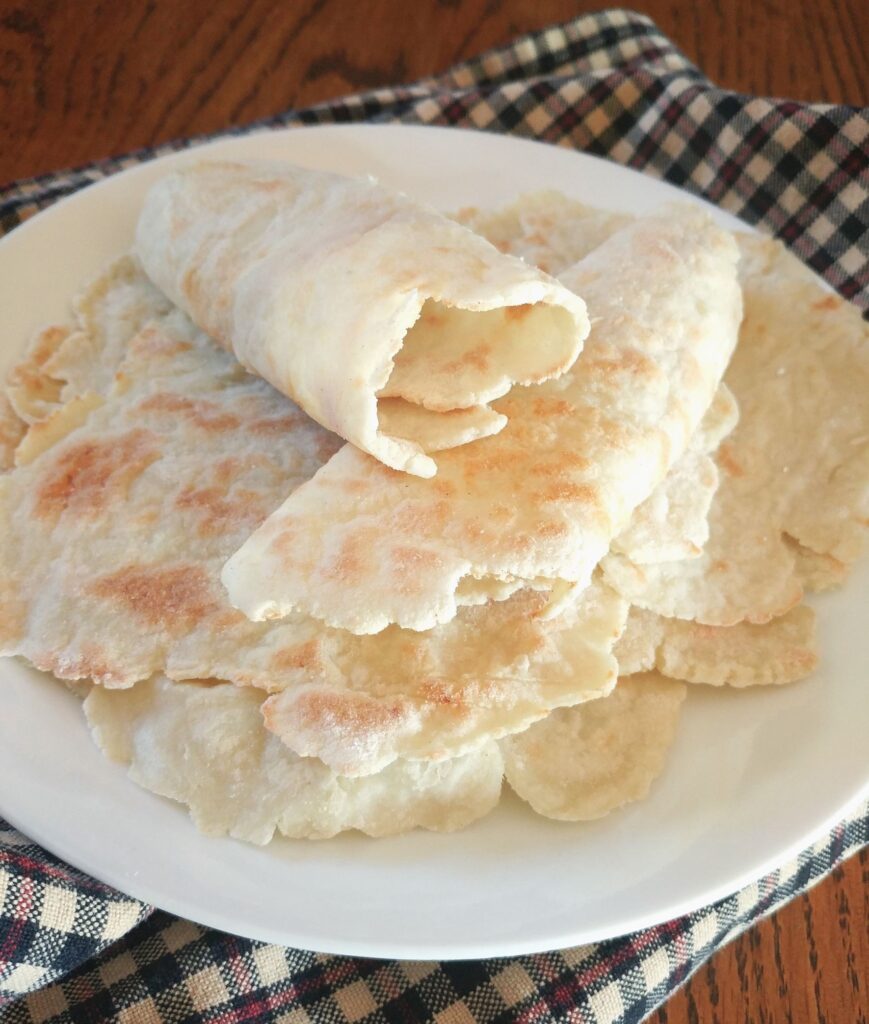
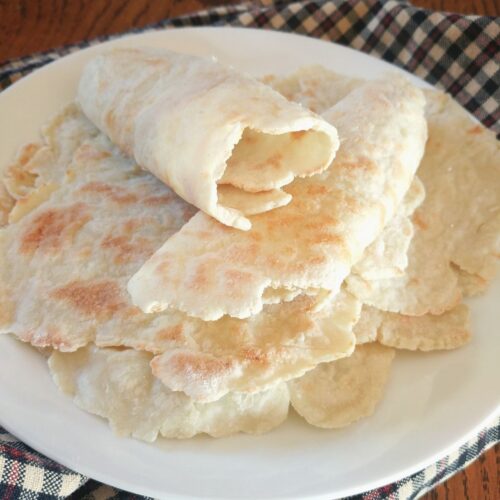
Vegan and Gluten Free Lefse
Equipment
- Electric Skillet Or a skillet on top of the stove will work just as well.
- 1 Immersion blender
Ingredients
- 3 lbs Potatoes I used Red Potatoes
- 1/4 Cup Potato Water
- 1/4 Cup Plant Based Milk I used a plain, unsweetened almond milk.
- 1 tsp Salt
- 1 Tbsp Vegan Margarine
- 1 1/2 Cup Gluten Free Flour Plus extra to roll out the lefse, I used King Arthur Gluten Free Measure for Measure Flour.
Instructions
NOTE: If using left over potatoes, skip the cooking of the potatoes, add all the ingredients, (leaving out the flour) to the left over potatoes, puree until smooth and continue to The next day portion of the recipe.
- Clean, peel, and dice your potatoes.
- In a medium sized stock pot, add the potatoes and enough water to cover the potatoes.
- Bring the water to boil at a medium high heat, once at a boil, reduce to a medium heat until they are soft but not mushy.
- Remove from the heat, but before draining the potatoes, make sure to have a bowl under the strainer to collect the potato water.
- Drain the potatoes, and place them back into the pot, continue by adding the margarine, salt, potato water, and plant based milk.
- Mash up the potatoes with an immersion blender until they are smooth and lump free.
- Place the mashed potatoes in a bowl and put into the refrigerator over night.
The next day
- Remove the bowl from the refrigerator.
- Add the flour to the potatoes and blend well, adding a little at a time to make sure the flour is well incorporated.
- Sprinkle a little flour onto the counter and onto your rolling pin.
- Scrape the potato mixture onto the floured countertop and form a long log.
- Cut the log into sections, the sections should be about the size of a golf ball.
- To keep the dough from falling apart, place the sections on a plate and return to the refrigerator until ready to roll out.
- Remove one of the sections from the plate, place onto the floured counter and roll out as thin as possible, using as little extra flour as possible.
- In this recipe I used a electric skillet and set the temperature to 325° F.
- If using a skillet on the stove top, heat the skillet up to a medium heat before adding the rolled out lefse, and adjust the heat as you cook the lefse.
- Once the skillet is to temperature, place the rolled out lefse on the skillet.
- Cook for a few minutes, flip, cook for a few more minutes on the opposite side.
- You will start to notice that the lefse starts to form brown spots, this means it is time to flip.
- Also the lefse can puff up in spots, this is normal.
- Once the lefse is done, remove from the skillet and place onto a flour sack towel to cool.
- Continue making the lefse until you have used all the dough.
- After everything has cooled, store in a air tight container in the refrigerator or freezer.

